Christian Hey's
Rolls-Royce Phantom II Display Chassis
When asked about the legendary Pocher Rolls-Royce kit, we have often encouraged would-be builder with the observation that such a large and complex model can benefit from being built in stages. Begin with the engine, which can be put on stands and enjoyed as a display piece. After a suitable time for recovery, build the chassis, axles and wheels and add the previously completed engine to create a striking display, bristling with details and complexity. When the trauma of the project has been forgotten, add an interior and body, which, with any luck, will be completed before the builder's dotage. We think this is good advice, and we are hopeful that those who followed it are pleased. Improvement, however, is always possible, and Christian Hey's Phantom II display chassis has gone beyond anything we ever envisioned. The principle we were espousing was that when one builds each assembly of a complex model as if it were to be displayed as a separate model, the results are bound to be pleasing. Combining a series of such carefully built sub-assemblies is almost a guaranty of success when it comes to the completed model because by concentrating on the sub-assemblies, the builder is not tempted take short-cuts nor to rush through the work.
The process of slowing down and concentrating on each element as if it were a separate model works to assure an impressive outcome, but in this case, Christian Hey has begged the question, why would anyone want to cover up this chassis with a body? This question has probably been asked by nearly every Pocher builder, but in this case, we have proof that each element was scrutinized for accuracy and artistry. By using the natural colors of the materials-copper, brass, steel, wood-details which might have been invisible are accented and the builder's skills accentuated. The artistry of the Rolls-Royce designers, which is usually obscured by black enamel paint, is high-lighted and made into a narrative. The chassis has become a teaching tool which illustrates and animates the Rolls-Royce design.
Confronted with this chassis, some of us may be led to second-guess our choice to cover our chassis with bodywork. Who has not noted that so many of the fascinating details of an automobile disappear under the body?
Those of us who clothe our chassis in bodywork are telling a different story, and we are seeking a different result. We are seeking an illusion that the model is a miniature version of the actual automobile, and we are seeking a narrative that goes with that illusion. The chassis standing alone seeks to let the original Rolls-Royce designers tell their own story, and the remarkable complexity of the mechanical details celebrates the builder's accomplishment. In an ideal world, who wouldn't want one of each?

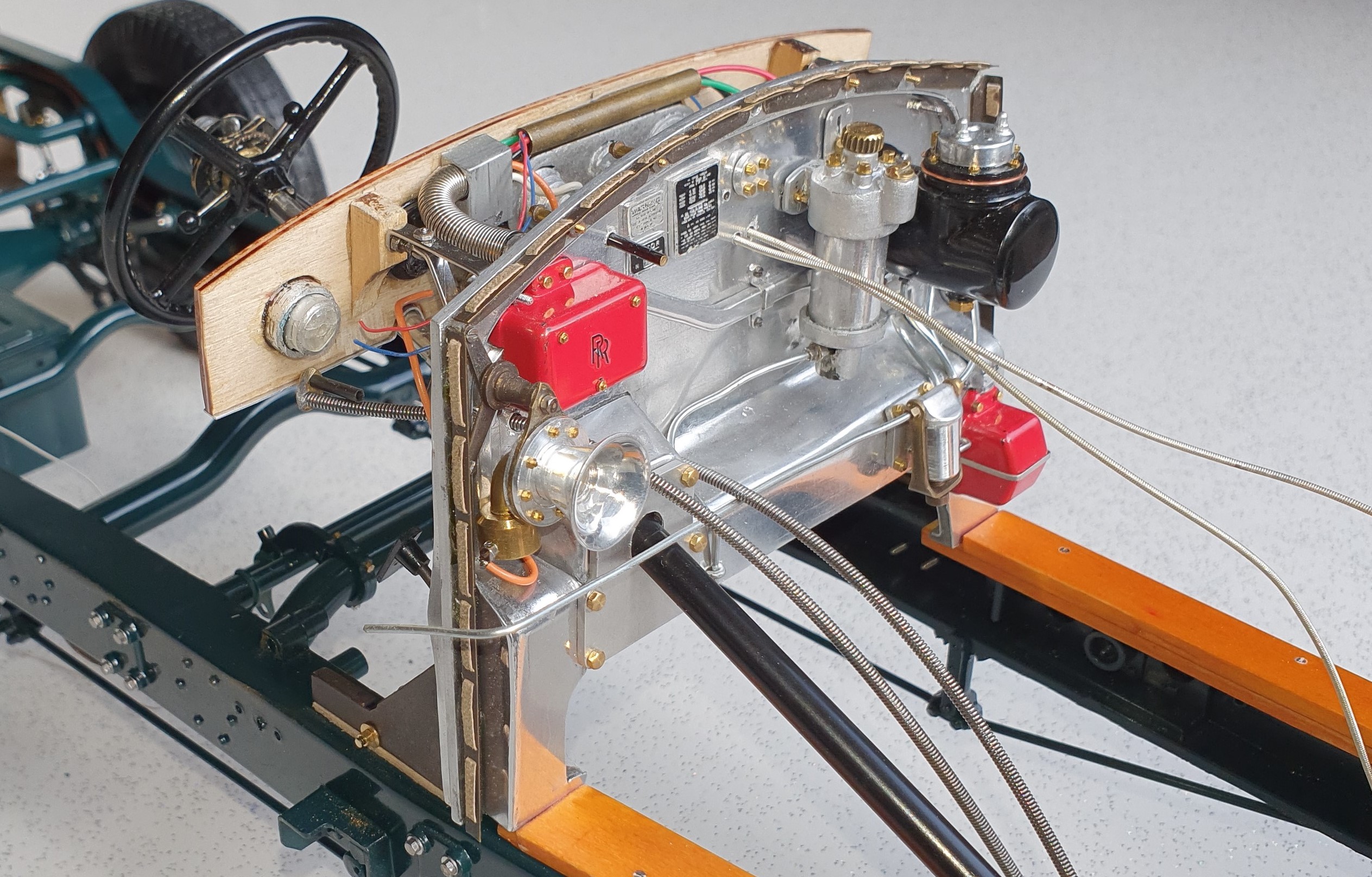




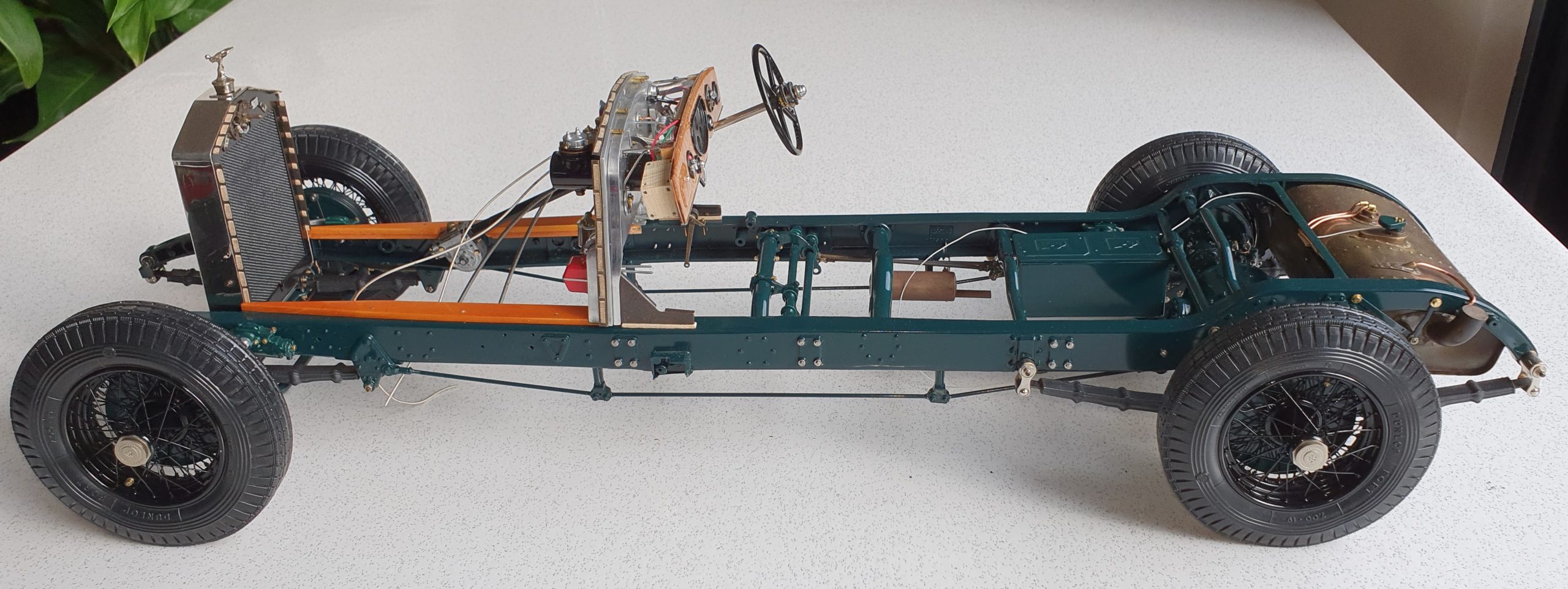

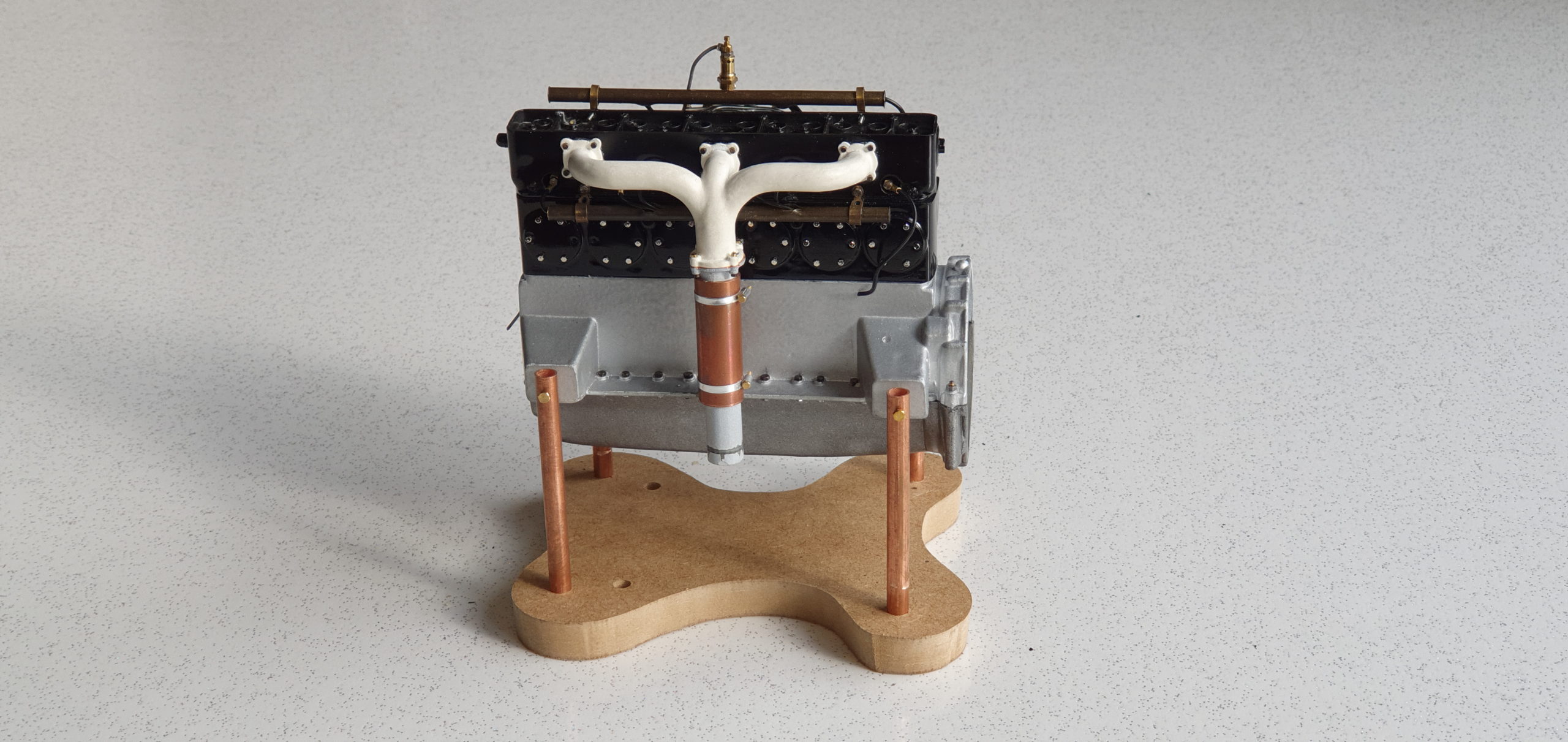



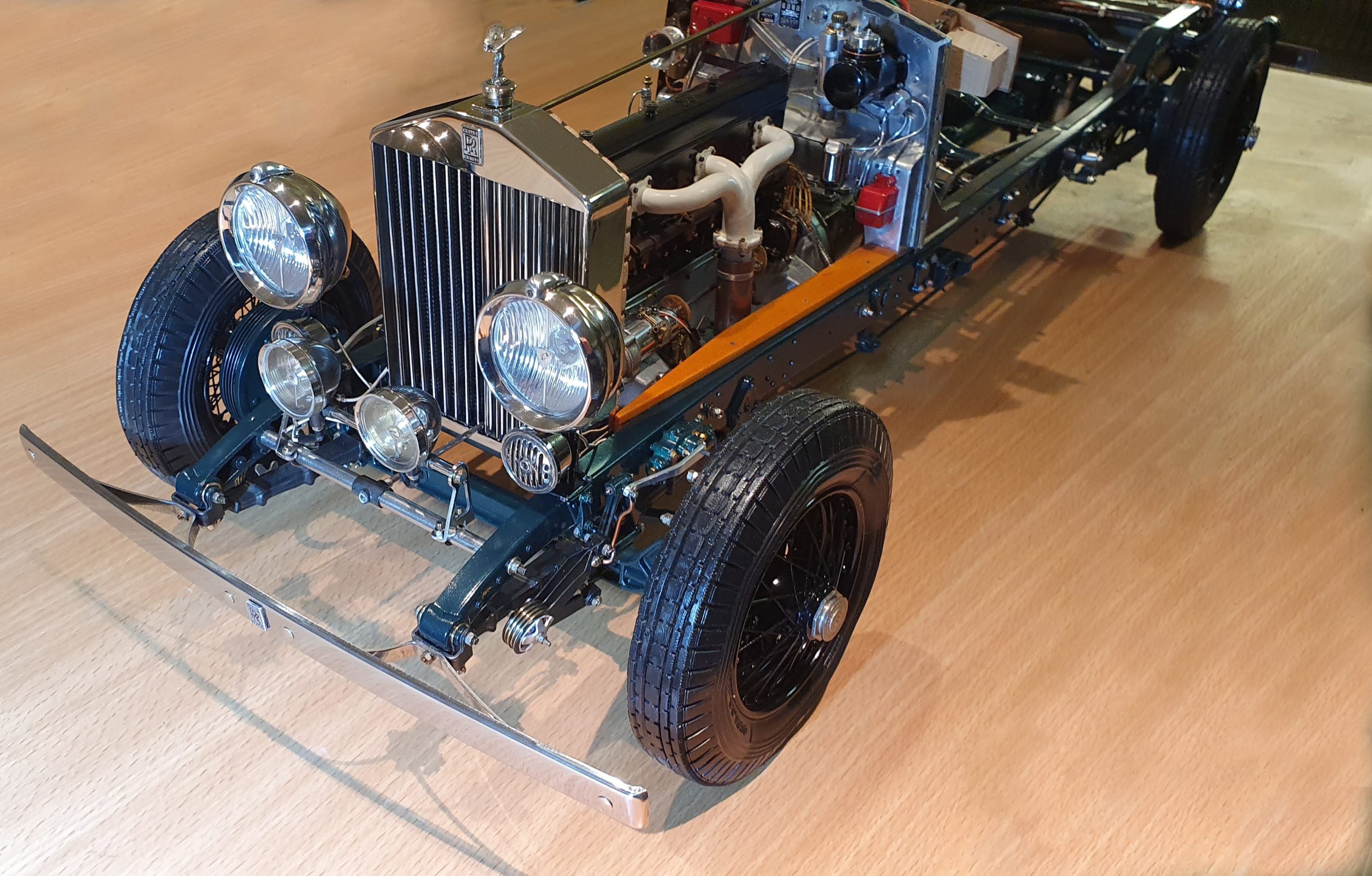







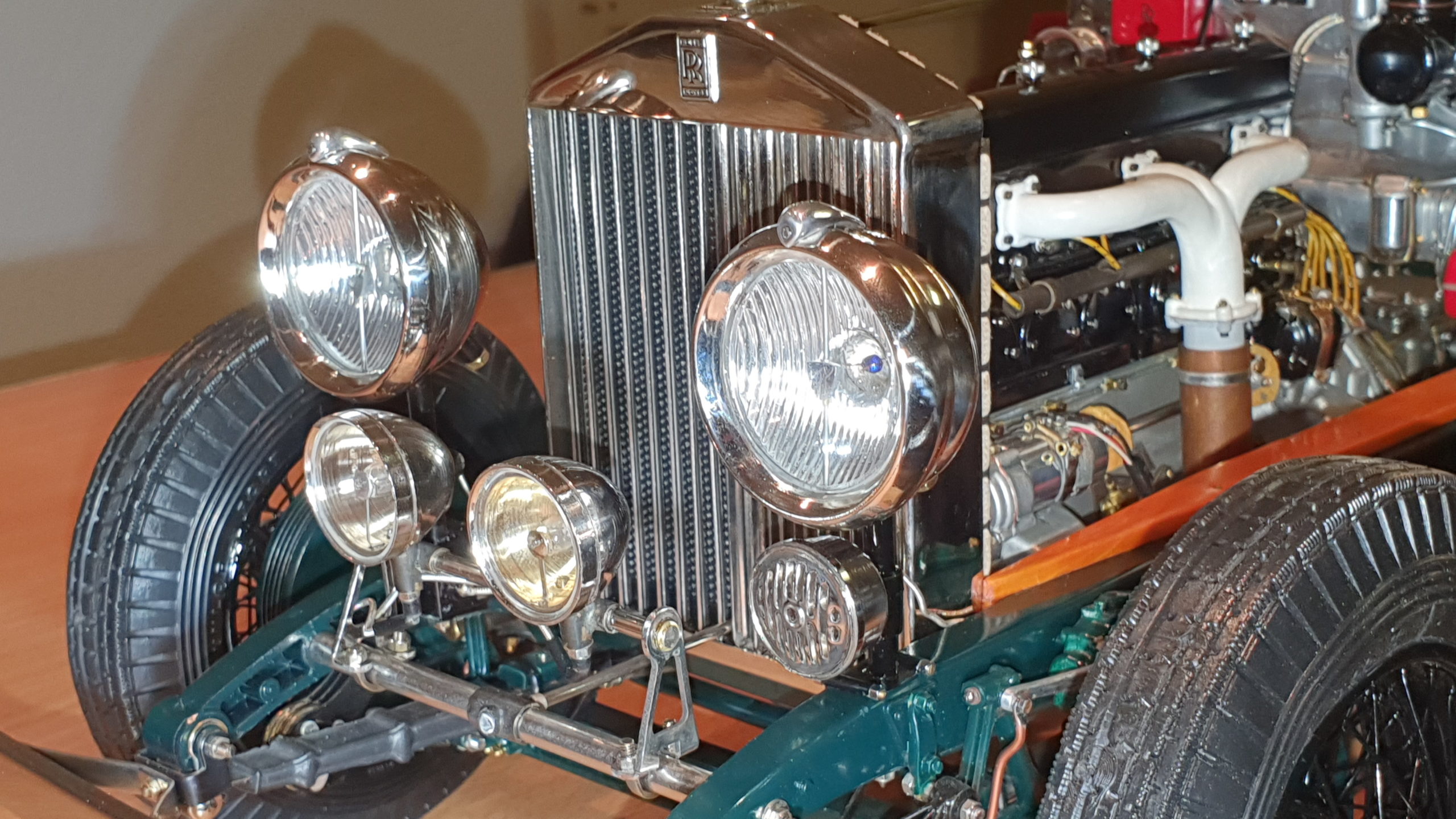


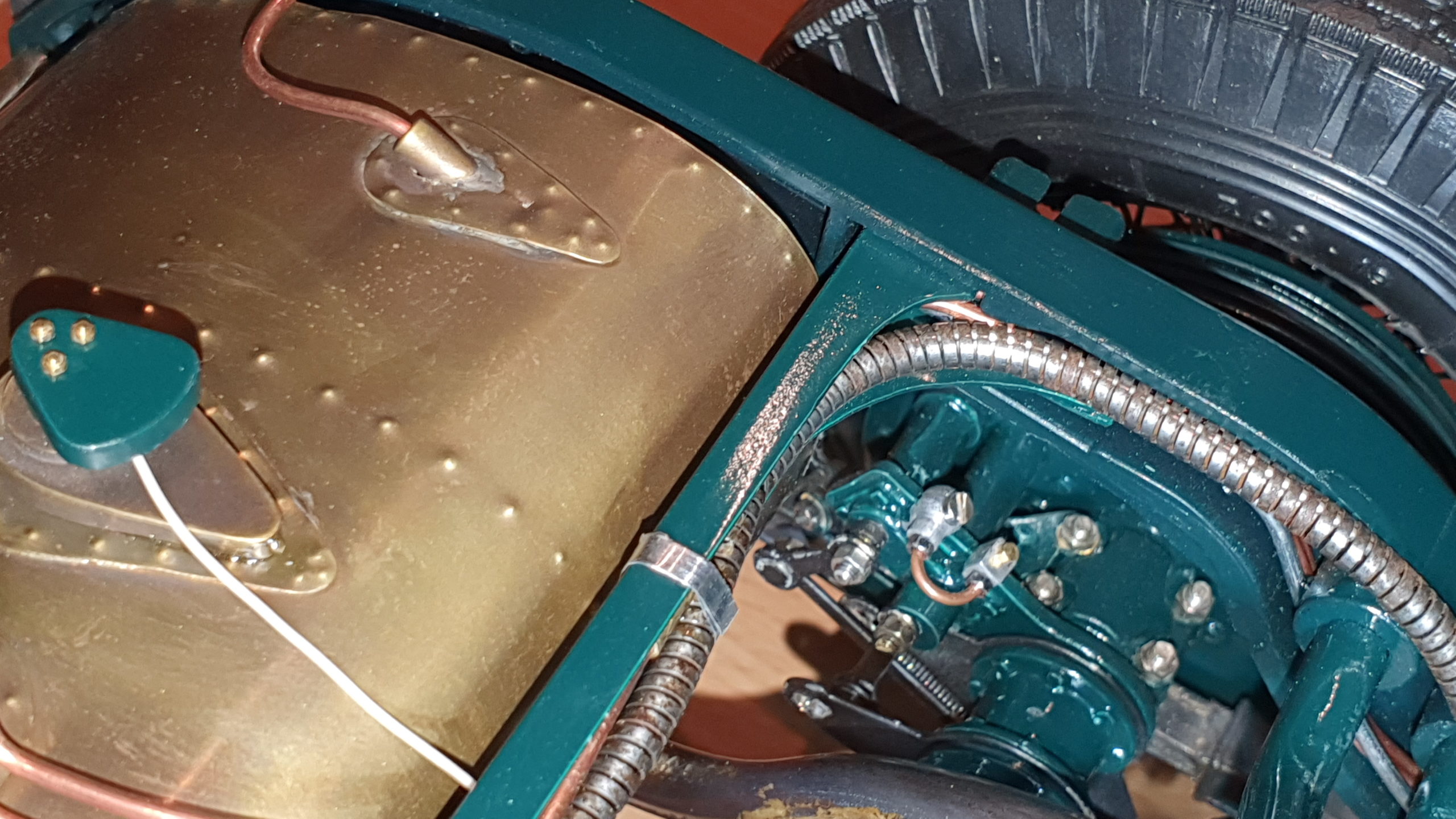
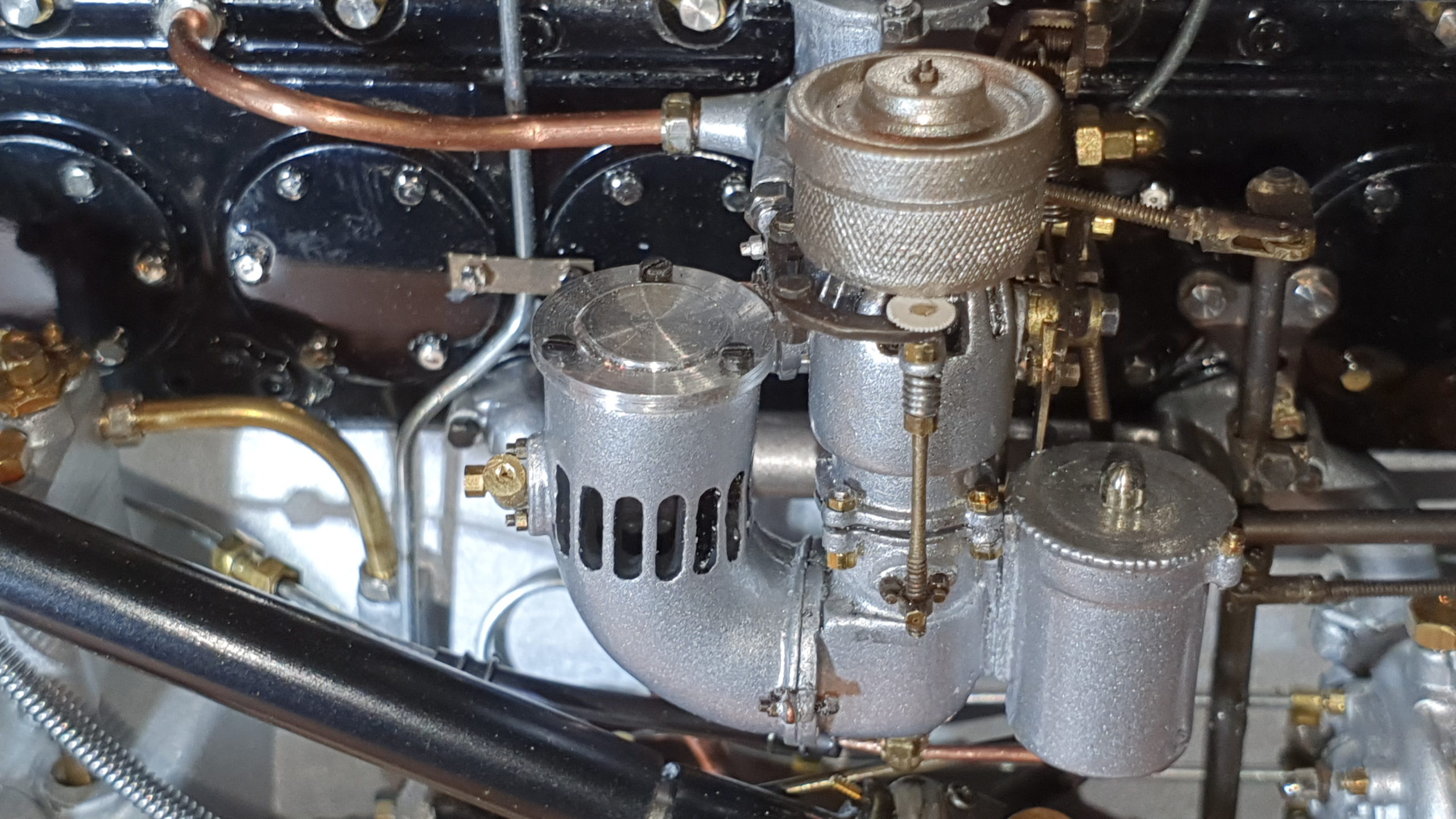













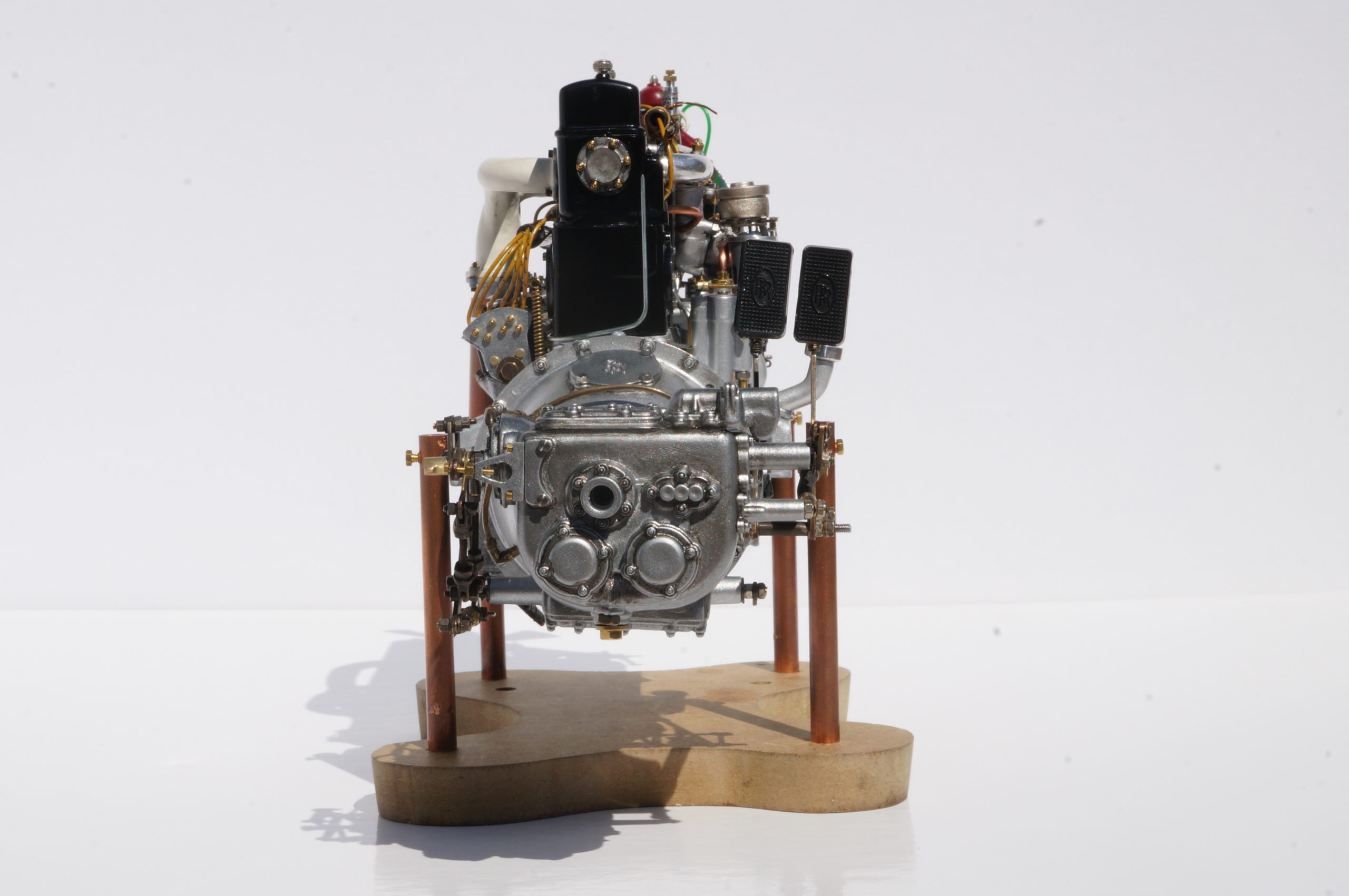

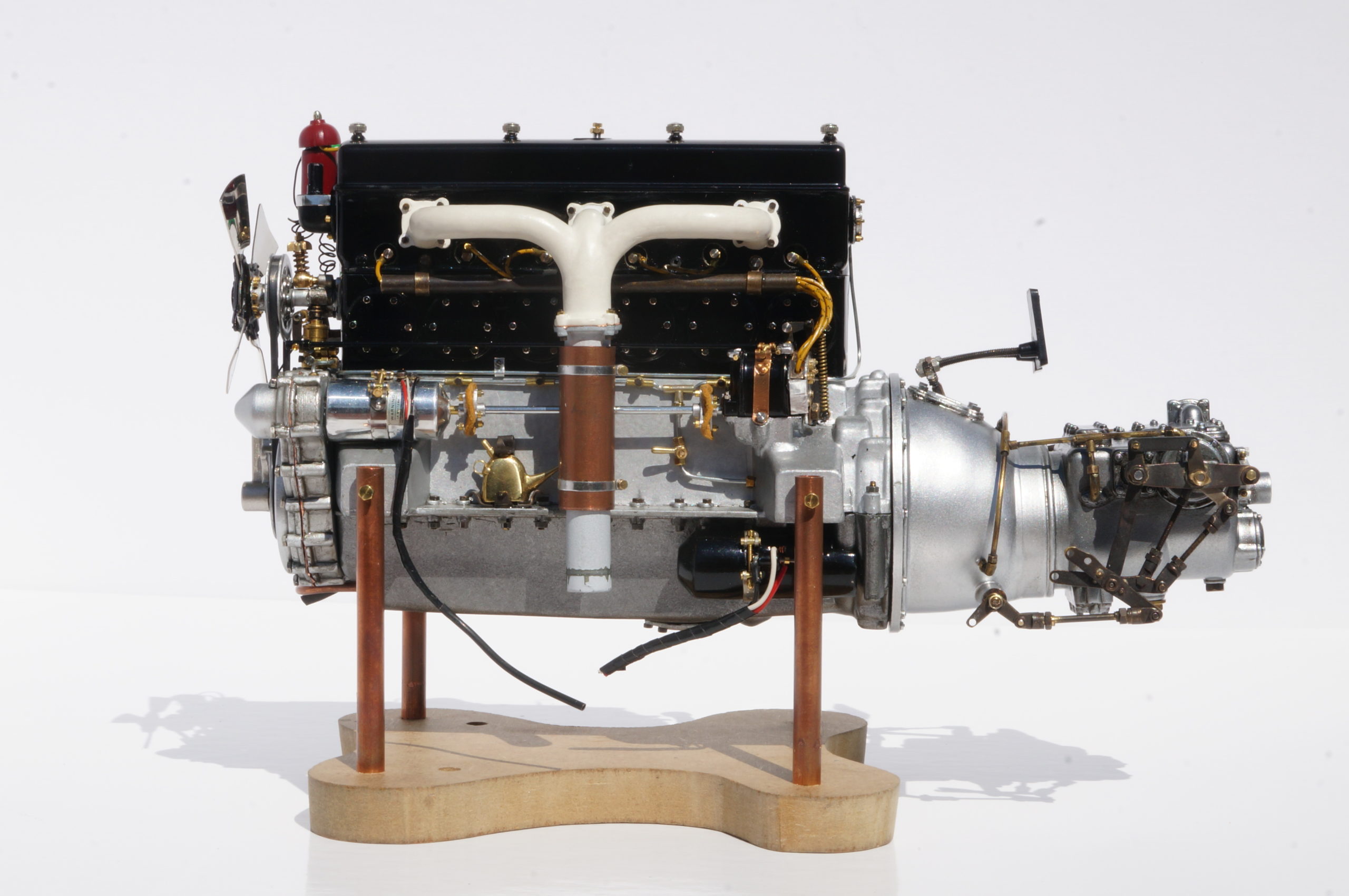










You must be logged in to post a comment.